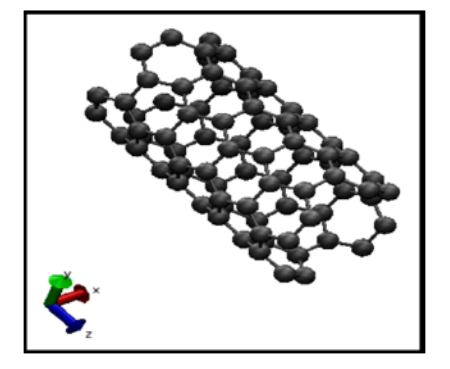


Indian Journal of Science and Technology
DOI: 10.17485/IJST/v16i40.1019
Year: 2023, Volume: 16, Issue: 40, Pages: 3567-3574
Original Article
Sarita Tyagi1,2, Sunita Negi2*
1Lecturer, Department of Physics, Government College, Haryana, Faridabad, India
2School of Engineering & Sciences, G. D Goenka University, Haryana, Gurugram, India
*Corresponding Author
Email: [email protected]
Received Date:30 April 2023, Accepted Date:20 September 2023, Published Date:31 October 2023
Objectives: Functionalization which is the addition of an external group shows a significant variation in the electron density of a material. To study the impact of chirality and diameter on the Density of States (DOS), different types of carbon nanotubes are sidewall functionalized with electron withdrawing functional groups. The main objective of this work is to investigate how functionalization affects the DOS of nanotubes as a function of chirality and nanotube diameter. Methods: This study has been done by Density Functional Theory (DFT) calculations which are a quantum mechanical approach for solving the Schrödinger equation and studying the electronic properties of different materials. DFT calculation is performed on different types of carbon nanotubes with the help of Quantum Espresso software to find its density of states. DFT uses pseudopotential and plane-wave basis sets to represent the electronic wave functions. The DOS of functionalized CNT is compared with that of the pristine CNT. Findings: This research aims to examine how chirality affects a sidewall functionalized CNT. A comparison was also made between two distinct functional groups. The metallic CNT is converted into semiconducting CNT and vice-versa when an external group is attached at its vicinity since functionalization modifies its electronic structure. DOS of armchair and chiral carbon nanotubes functionalized with NH2 and OH groups on the side wall is compared with its pristine form for the first time. In this study, different groups are adhered to the surface of (4, 4), (4, 2) and (4, 1) CNTs. The diameter and chirality of the CNT have been identified to have a substantial influence on the calculation of the DOS. Novelty : An electron withdrawing group is attached to the surface of a carbon nanotube which shows variation in its electronic properties by significantly modifying its density of states. Fermi level shifts and the metallic nanotubes are observed to behave as semi-metallic and vice-versa on functionalization. The curvature effect in the case of small diameter nanotubes hinders the electronic properties of the carbon nanotubes, which can be overcome by functionalization.
Keywords: Single walled carbon nanotube (SWCNT); Double walled carbon nanotube (DWCNT); Density Functional Theory (DFT); Density of States (DOS); Quantum Espresso (QE) software; Sidewall functionalization; Amidogen group (NH2); Hydroxyl group (OH)
© 2023 Tyagi & Negi. This is an open-access article distributed under the terms of the Creative Commons Attribution License, which permits unrestricted use, distribution, and reproduction in any medium, provided the original author and source are credited. Published By Indian Society for Education and Environment (iSee)
Subscribe now for latest articles and news.